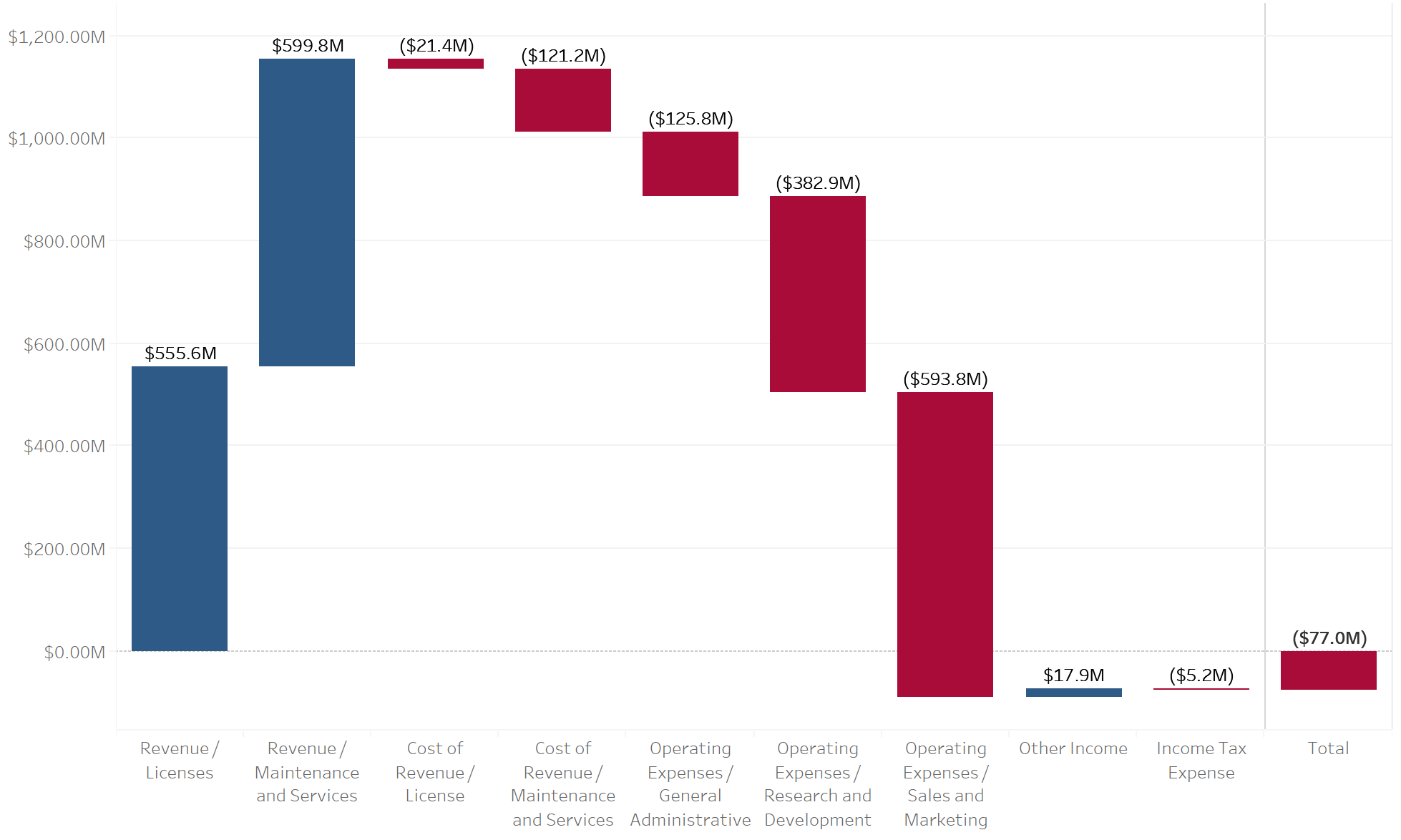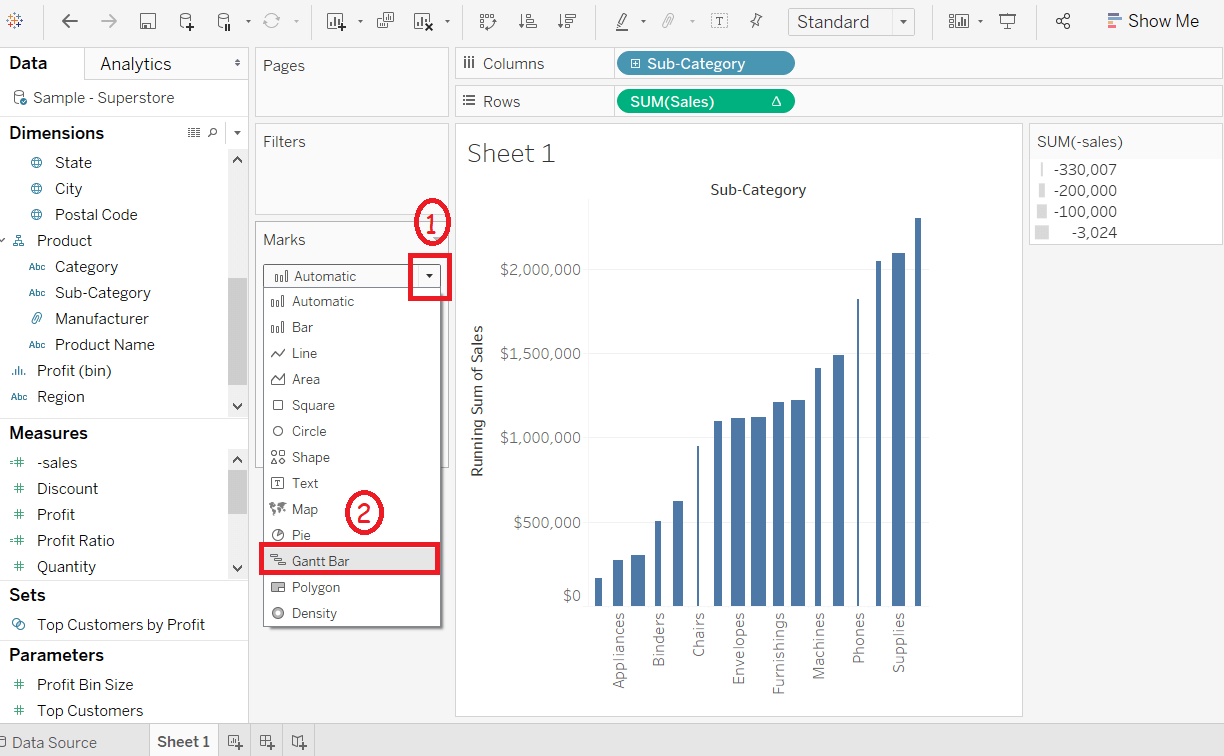

Choose the options as shown in the following screenshot.

The Format Borders appear in the left pane. Right-click on crosstab chart and choose Format. Now, you can change the borders of the crosstab table created by using the formatting options. Format BordersĬonsider a crosstab chart with Sub-Category in the Columns shelf and State in the Rows shelf. You can also change the orientation of the values in the axes as well as the shading color as shown in the following screenshot. Choose the font type as Arial and size as 8pt. Change the FontĬlick the font drop-down in the Format bar, which appears on the left. Click the vertical axis and highlight it. You can create a simple bar chart by dragging and dropping the dimension Sub-Category into the Columns Shelf and the measure Profit into the Rows shelf.
ADVANCED WATERFALL CHART TABLEAU HOW TO
In this chapter, you will touch upon some of the frequently used formatting options. In this silent video, youll learn how to create a waterfall chart with a second dimension on color.Creating a Waterfall Chart with a Second Dimension on Col. The following diagram shows the Format Menu which lists the options. You can format both the content and containers like tables, labels of axes, and workbook theme, etc. You can modify nearly every aspect such as font, color, size, layout, etc. In our case Bookcases, Supplies and tables are the three subcategories that are bringing the profit down.Tableau has a very wide variety of formatting options to change the appearance of the visualizations created. Waterfall charts effectively display the cumulative. the foundations of the Tableau 2019 paradigm through to advanced topics. During my Corporate Tableau Training in Gurgaon, i get questions many time regarding Waterfall charts. We can clearly see how each subcategories contribute to the total profit. Waterfall Charts in Tableau by Elnisa Marques Waterfall Charts also known as. Waterfall Chart - Open Sheet 2 and rename it (2) Waterfall Chart Data Source - VIA ExcelSampleSuperstore. Bring the calculated field in the colors mark and your waterfall chart is ready. tricks) Tableau Errors: Cannot mix Aggregate and Non Aggregate Arguments How to Create Sales Dashboard in Tableau in 30 minutes. Step 6: Click on the Analysis button on the menu bar and in the dropdown select Show Row totals. How to make an AWESOME Waterfall Chart in Excel (with 2 adv. Step 5: Select gannt bar from the marks card and drag the measure negative profit to the size. Step 4: Create a calculated field to differentiate between positive and negative profir. Step 3: Create a calculated field for Negative Profit. Step 2: Right click on the Profit measure in rows and from the dropdown select Quick table Calculations> Running total. Step 1: Drag Sub Category to the columns and Profit to rows. Once you drag them, the following Chart report will be generated. Since it is a Measure value, the Sales Amount will be aggregated to the default Sum. Next, Drag and Drop the Sales Amount from the Measures Region to the Rows Shelf. In this data lets try to see how the subcategories have contributed to the overall profit in a year. In order to show Individual Axis in Tableau First, Drag and Drop the Color from Dimension Region to Column Shelf. A waterfall chart is a form of data visualization that helps in understanding the cumulative effect of sequentially introduced positive or negative values. Today we will discuss about how to make Waterfall charts in tableau. Waterfall charts can allow you to see the individual and cumulative affects of multiple items in one chart. In the last article under Advanced Charting we discussed how to create Rank Charts in Tableau.


 0 kommentar(er)
0 kommentar(er)
